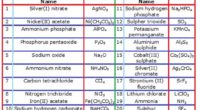Respiratory System MCQ
AIDS patients are susceptible to this respiratory disease
(a) Pneumonia
(b) Fibrosis
(c) Emphysema
(d) Asthma
In which disease lung tissues degenerate?
(a) Bronchitis
(b) Pneumonia
(c) Asthma
(d) Emphysema
Flattening of alveolar ducts (tracheal vessels) results in
(a) Asthma
(b) Emphysema
(c) Lung cancer
(d) Bronchitis
Hamburger’s phenomenon is also known as
(a) HCO3 shift
(b) Na+ shift
(c) H+ shift
(d) Chloride shift
In expiration, diaphragm becomes
(a) Flattened
(b) Relaxed
(c) Straightened
(d) Arched
Maximum amount 70-75% of carbon dioxide transport occurs as
(a) Dissolved in plasma
(b) Carbamino haemoglobin complex
(c) Bicarbonate
(d) None of these
In carbon monoxide poisoning there is
(a) Increase in carbon dioxide concentration
(b) Decrease in oxygen availability
(c) Decrease in free haemoglobin
(d) None of these
Effect of Nicotine on blood circulation
(a) it mixes with blood
(b) it contracts the arterial wall
(c) it decrease the blood pressure
(d) it decrease the carrying of oxygen to lungs
It converts fibrinogen into soluble fibrin
(a) Thromboplastin
(b) Thrombin
(c) Prothrombin
(d) Ca++
Hiccough (hiccup) is due to activity of
(a)Intercostals muscles
(b) Food in air tract
(c) Diaphragm
(d) inadequate oxygen in environment
Bronchitis:
Inflammation of the lining of bronchial tubes, which carry air to and from the lungs.
Asthma:
A condition in which a person’s airways become inflamed, narrow and swell and produce extra mucus, which makes it difficult to breathe.
Emphysema:
Emphysema is an abnormal permanent enlargement of air spaces distal to the terminal bronchioles, accompanied by the destruction of alveolar walls.
Lung Cancer:
Lung cancer, also known as lung carcinoma, is a malignant lung tumor characterized by uncontrolled cell growth in tissues of the lung.


